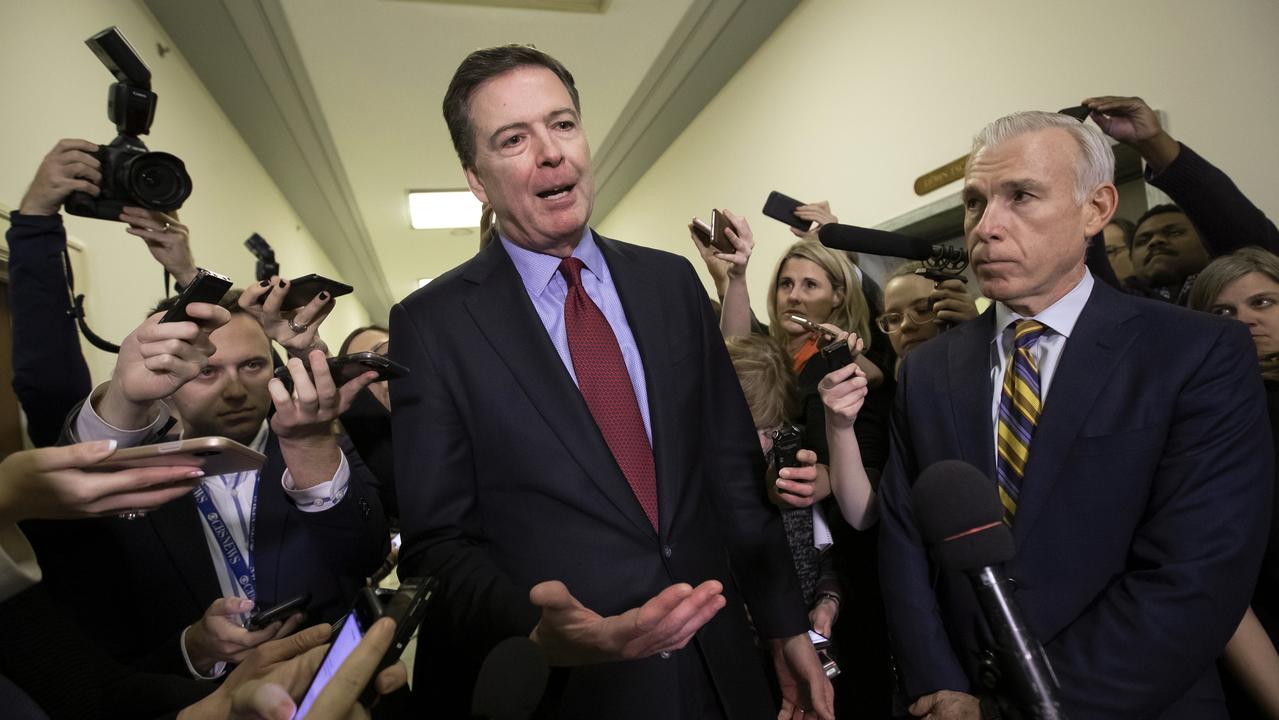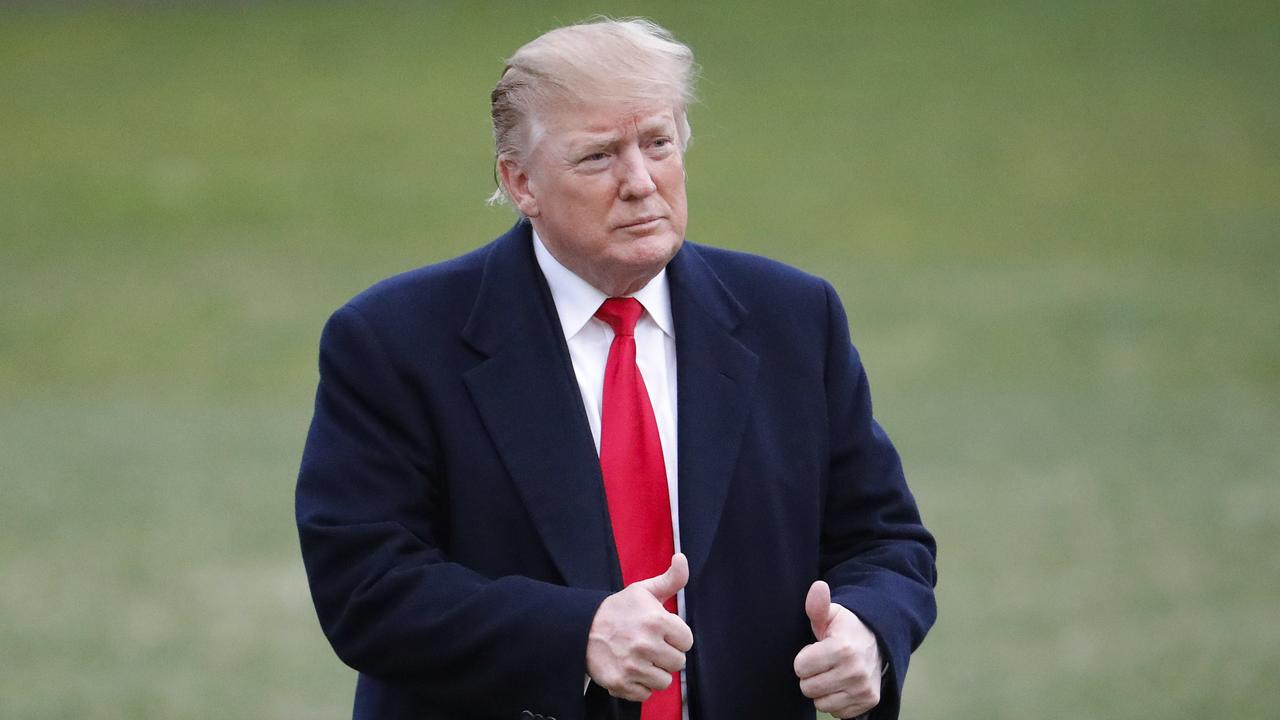Next Reserve Bank governor Philip Lowe hopes to avoid turmoil
New bank head feels the financial world is on cusp of a revolution.

Philip Lowe’s plan as the Reserve Bank’s next governor is a simple one: to do as little as possible.
That is, at least as far as interest rates are concerned.
If needed, the bank can cut rates further. Though the cash rate, the base for all short-term interest rates in the economy, is now only 1.5 per cent — easily the lowest in its history — it remains one of the highest in the advanced world.
And the Reserve Bank has done the research to show that once rates are down to a level where further cuts would achieve little — Lowe previously nominated a figure of 1 per cent — it could follow the major advanced-nation central banks in buying up government bonds to push down long-term rates.
But Lowe has no appetite for further rate cuts if he can possibly avoid it. This week’s national accounts show that though inflation and wage growth remain low, the economy is achieving reasonable growth.
Lowe is hoping for a much quieter time than the man he is replacing, Glenn Stevens. Stevens had to manage both the global financial crisis — the most serious and disruptive downturn since the 1930s Depression — and the biggest resources boom Australia has faced, at least since the 1850s.
Stevens regards his success in ironing out the volatility in Australia’s economy as one of his major achievements.
Australia’s growth has been less volatile in the past decade, despite the financial crisis and the resources boom and bust, than in the previous decade, while the record on both growth and inflation has been better than in other major advanced nations.
Today, Stevens will be named a Companion of the Order of Australia in recognition of his services, in a ceremony at Government House in Canberra.
The economic turmoil of the past decade has been accompanied by unprecedented political instability as well. At his tribute dinner with the Sydney business community on Tuesday night, Stevens noted he had served five treasurers and six prime ministers during his 10-year term, compared with his predecessor, Ian Macfarlane, who served just one of each, Peter Costello and John Howard.
Lowe has worked alongside Stevens for his entire working life — the two joined the bank in 1980, Stevens from the University of Sydney and Lowe as a junior fresh out of Wagga Wagga High School.
Lowe has been attending the Reserve Bank’s board meetings since 2004 and has been a member of the board since being appointed deputy governor in 2012, so no radical change can be expected in the way the central bank operates.
But Lowe has different priorities to Stevens. He believes the financial world is on the cusp of a revolution in the way it works, and he expects the Reserve Bank to be at the heart of that.
Cashless transactions are taking off — Lowe is more likely to use his phone to pay for his lunch at the Reserve Bank cafeteria than one of the bank’s controversially colourful new $5 notes.
One of the Reserve Bank’s responsibilities is the electronic payments system and it is in the throes of supervising the development of a new platform that will enable households and businesses to conduct instant transactions at any time of day or night, including full transaction details. And just as with the operating systems for smartphones, developers will be able to customise their apps.
Lowe, whose interest in digital technology innovation rivals that of Malcolm Turnbull, sees this as just the beginning. The “blockchain” technology developed by the mysterious inventor of the bitcoin currency — claimed to be the Australian Craig Wright — enables people to conduct financial transactions without needing a central bank to guarantee the value of the money. It could transform the settlement of trading in shares and bonds, which the Reserve Bank oversees.
“I think we need to think about things like ‘blockchain’ that are evolving and what that might do to clearing settlement exchanges itself,” Lowe told a conference. “Flexibility and agility are going to be really important.”
Lowe has strong views about how the development of such technologies should be supervised, proposing a very different approach to the strong regulations backed by intensive supervision of the banking system.
“In a digital age, I think the way laws apply and regulations apply, we need to rethink a little bit. In the digital age, you have a lot of innovation occurring. Some of it may take off and some of it may not. I think they’ve almost got to have an environment where you do allow things in the ‘sandbox’ to evolve with a limited approach.
“This graduated approach must be really central to how we approach this. We’ve got to make sure that the regulations we put in place don’t preclude something that might ultimately be to our collective advantage.”
While electronic payments systems evolve, the amount of cash withdrawn by households from ATMs continues to fall. Yet demand for cash, particularly in large denominations, continues to grow. The Reserve Bank has $65.5 billion in banknotes in circulation, with the number of $100 notes rising by 11 per cent last year to about $17bn.
That is roughly seven $100 notes for every person in the country. This cash is hoarded as a store of value — much of it, the Reserve Bank suspects, in China. It comes back to the Reserve Bank still in its original wrapping.
Lowe will not want to discourage demand for banknotes — it makes a healthy profit from the interest it earns on every note it issues. But while he is keen to help shape the way we bank and transact, believing Australia’s finance industry can gain a global competitive advantage if we do it well, the way he manages Australia’s economic fortunes will dictate how his seven-year term is ultimately judged.
Lowe is open in his belief that the scope for further rate cuts to either lift economic activity or boost inflation is limited.
“I think interest rates are probably less effective than they used to be,” he told a questioner after a recent speech. “In earlier decades we found that when interest rates were lower, it didn’t take that much for consumers to respond, to borrow either for housing or more fundamentally for household consumption. Once house prices had risen, people would quickly to go to the bank when interest rates were lower to extract some of the equity to buy a new car or go on a holiday or increase their spending. I think those days are over, or at least they’re over for a while.”
Rate cuts still have some value — people can pay down their debts faster and, at the margin, lower interest rates can lower the value of the Australian dollar, which helps companies become more internationally competitive and lifts inflation.
While Lowe hopes the economy pursues a steady improvement with inflation slowly returning to the target zone of 2 to 3 per cent, he acknowledges there are risks that will have to be managed.
“We’re one of the few advanced economies that has not had to cut our interest rates to zero, which I think is a good thing. So we still have flexibility there.”
Lowe believes the federal government still enjoys some of the legacy left by Costello as treasurer. “Because of our long history of fiscal prudence, we still have flexibility on fiscal policy if we really were to need it. I think the Australian economy has proven to be remarkably flexible.”
Lowe argues the obsession about whether Australia will have a recession and if so, when, is unhelpful. “We should be hoping that when those periods inevitably happen that they’re short-lived and that the economy adjusts quickly to deal with it. This fascination about will we or won’t we have a recession at some point — I personally think that’s slightly misplaced. The issue is really when those periods happen, how do we best deal with them — and flexibility again is the key.”
The Reserve Bank recently disclosed the details of a study it conducted on how it would respond to a serious downturn. It would be prepared to buy government bonds and, with some underwriting from the government, would also consider the riskier step of buying corporate bonds.
The study said negative interest rates, used by many overseas central banks, are not attractive because of the problems they create for banks that cannot pass negative rates on to depositors.
The new deputy governor, Guy Debelle, led the Reserve Bank’s response to the global financial crisis and was ahead of other world central banks in the innovative ways he was prepared to take private bank assets, such as securitised mortgages, on to the Reserve Bank’s balance sheet. His promotion ensures the Reserve Bank board has some of the world’s best expertise on how to manage unorthodox monetary policies, if they are needed.
Both Debelle and Lowe have strong reputations in the world of central banking. Debelle recently led a global initiative to improve the transparency of foreign exchange trading, reducing the potential for manipulation. In the mid-2000s, Lowe was joint author of a paper that transformed the way central banks see their task, with a responsibility not only for managing inflation but also managing the risks that monetary policy creates in asset markets, such as housing, share or bond markets.
Lowe will continue, and may extend, Stevens’s practice of improving the transparency of the Reserve Bank’s operations. Stevens’s predecessor, Macfarlane, once vowed the Reserve Bank would never publish minutes of its board meetings, but Stevens soon made it a routine practice. He also released a comment to the market after every board meeting, rather than just when the interest rate was changed.
Unlike many other central bank governors, Stevens never gave a media conference; however, he greatly increased the frequency of central bank speeches, most of which are followed by open question sessions. During 2015, Stevens and other senior staff gave 50 speeches, against only 20 in 2005 under Macfarlane.
The active communications program is partly a trade-off for the bank’s independence from government — something Stevens said remained unquestioned by any of the five treasurers he served. It is also about shaping expectations so that both households and businesses can base their dealings on an understanding of how the Reserve Bank sees the outlook.
Stevens and Lowe have used their public platform to advance the cause of good economic policy, including in areas beyond the central bank’s direct control.
Lowe argues that with monetary policy reaching the limits of its effectiveness, it is really up to government to do more to support economic growth. He talks about investing more in education and training, in improving regulation to make it more supportive of innovation, promoting competition and improving the nation’s infrastructure.
“I’m a central banker, but I think these are the issues we should be focusing on,” he says.



To join the conversation, please log in. Don't have an account? Register
Join the conversation, you are commenting as Logout